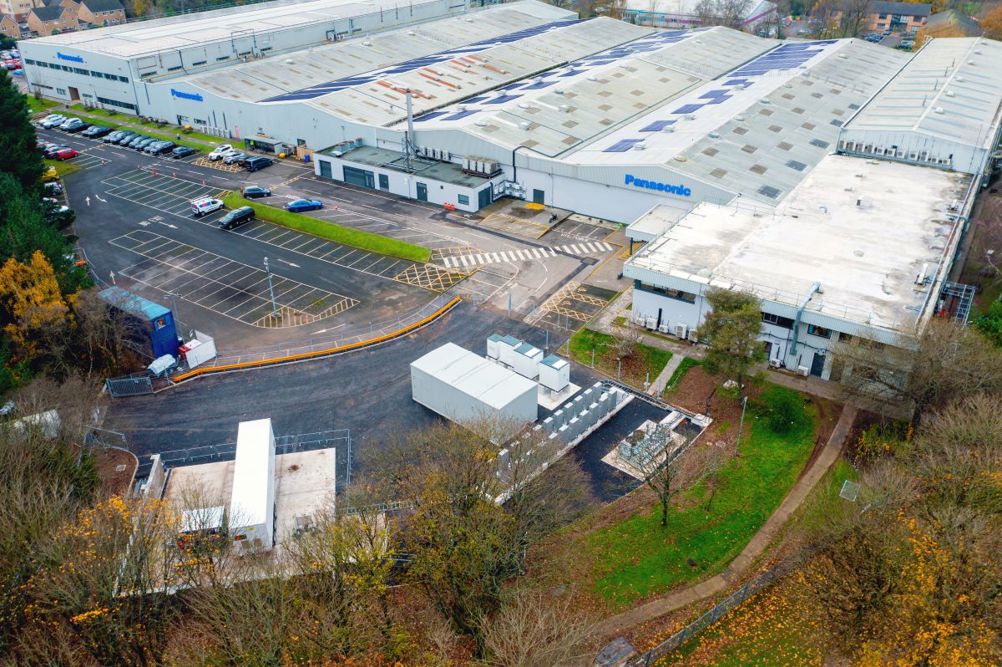At a ceremony attended by Panasonic Corporation president and CEO Masahiro Shinada, the company officially unveiled the Panasonic HX installation, which combines flexible hydrogen fuel cell power with rooftop solar and battery storage. The project is the first of its kind outside Japan and will serve as a showcase for the HX system, which Panasonic hopes to commercialise in the years ahead.
Related content
A total of 21 Panasonic fuel cells, fed by green hydrogen generated by nearby Protium, will deliver power and heat to the factory with an overall efficiency of 95 per cent. The system will be managed autonomously via the company’s proprietary Energy Management System. According to Panasonic, the installation will allow Panasonic Manufacturing UK’s (PMUK) microwave plant at Cardiff to operate entirely on renewable energy.
“This facility will use green hydrogen produced in the UK,” explained Shinada. “We believe that this is the place where we can take a big step towards the future by combining British and Japanese technology. It is our sincere hope that this facility can be used as a showcase to foster diverse partnerships, accelerate innovation through the combination of technologies, and contribute to the development of the UK’s hydrogen-related industry.
“Now, with the launch of Panasonic HX here at PMUK, we look forward to the next chapter. In ten years, or even 20 years, I hope this facility will be seen as a birthplace of innovation – where we helped build a hydrogen society and laid the foundation for a decarbonised future.”

Heat generated as a by-product of the fuel cells will be used for space and water heating at the Cardiff plant. The facility’s gas boiler has been replaced with a heat exchanger and Panasonic’s heat pump technology, fully removing fossil fuels from the on-site heating loop.
According to Masaya Aiba, director of the Energy Strategy Office at Panasonic Corporation, the HX system will be rolled out at a Panasonic site in mainland Europe in 2025. The company then plans to commercialise the technology, but acknowledges that the price of green hydrogen will need to fall in order for the economics to catch up with the sustainability credentials.
“We are going to install the same kind of system in Germany as well next year,” said Aiba.
“After that, we will go into realistic [commercial] business. That is our plan. Currently, the price of the hydrogen is very expensive, so it is a little bit hard to find that new customer, because of the economics of hydrogen.”
Panasonic believes this will change in the years ahead however, with the price of green hydrogen becoming more competitive.
“Some of our customers intend to use our fuel cell currently with blue hydrogen, but as they look to the future, they are willing to change that blue hydrogen to green hydrogen,” Aiba continued.
“I think that European countries are the most advanced countries in terms of policies so we are sure that the hydrogen market in Europe will grow faster than other markets.
“So we go into the realistic business step by step. This is the first step in the UK. The second step is in Germany. And the third step is making the realistic business in Europe after that.”












PMI falls as manufacturers feel the squeeze
17 months or two and a half years - which is it?